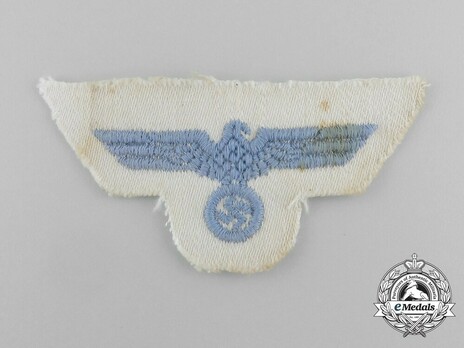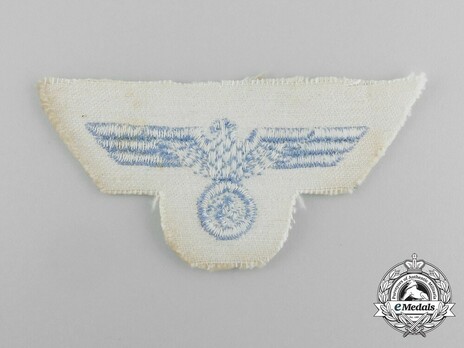Afrikakorps Kriegsmarine Blue On White Cloth Cap Eagle Insignia
SKU: 23.GOR.03.01.02.003
Estimated market value:


Estimated market value:
Attributes
History
During the Second World War, German troops stationed in northern Africa are generally referred to as the Afrikakorps. Technically, this is not entirely correct, since some German units operating in Africa were not actually part of the DAK (Deutsches Afrikakorps), and some units of it were, in fact, Italian ones. However, for the purpose of collecting so-called “tropical” uniforms and insignia, collectors have simplified the meaning of the term.
The first German troops were sent to northern Africa in February of 1941, to support their Italian allies against the British. The climate of the African continent made it necessary to wear specialised uniforms and gear that not only supported the soldiers in serving in a hot and arid environment, but also helped them in blending in with the landscape, which, in general, presented itself as brown, olive, khaki, or sand/tan in colour. Worn over long periods of time under the blistering desert sun, some uniforms were eventually bleached to white or off-white. Uniforms and insignia in these colours are often referred to as “tropical”, and it is worth noting that they weren’t just worn by members of units stationed in Africa, but in the entire Mediterranean theatre of war, including southern France, Italy, the Balkans, and Greece, as well as in southern Russia during the summer months. Tropical uniforms were worn by members of all three branches of the Wehrmacht: the Heer (army), the Kriegsmarine (navy), and the Luftwaffe (air force). Members of the Waffen-SS stationed in southerly regions also wore tropical-style uniforms, and even though they technically have no connection to the DAK, all tropical uniforms and insignia of all branches of the German military are listed here.
The regulations governing the manufacture of the woven/embroidered emblems stated that they were to be hand-embroidered, but as a result of the wartime demand, they were also machine-woven and machine-embroidered. The colour of the thread was yellow for all ranks, with the only exception being Administrative Officials who had their emblems made with silver/white thread. There are also rare examples of the national emblems worn by low-ranking NCOs and enlisted men/troops using cornflower-blue thread. The thread was generally made from cotton or artificial silk, but for Officers the thread could be made from gilt bullion or yellow celleon thread, and silver/aluminum bullion for Administrative Officials with the rank of Officer.
The woven/embroidered insignia were manufactured on backing whose colour corresponded with the headgear on which they were worn: blue backing for the blue and white uniform, field-grey or blue tinted dark-green backing for the field-grey uniform, and tan/khaki or, rarely, blue backing for the tropical uniform. On rarer occasions, blue emblems on a white backing were used for the white uniform as well.
The size of the embroidered and metal emblems varied by manufacturer, pattern, and type of headgear on which it was worn.


Comments
Sign in to comment and reply.


Scroll Top